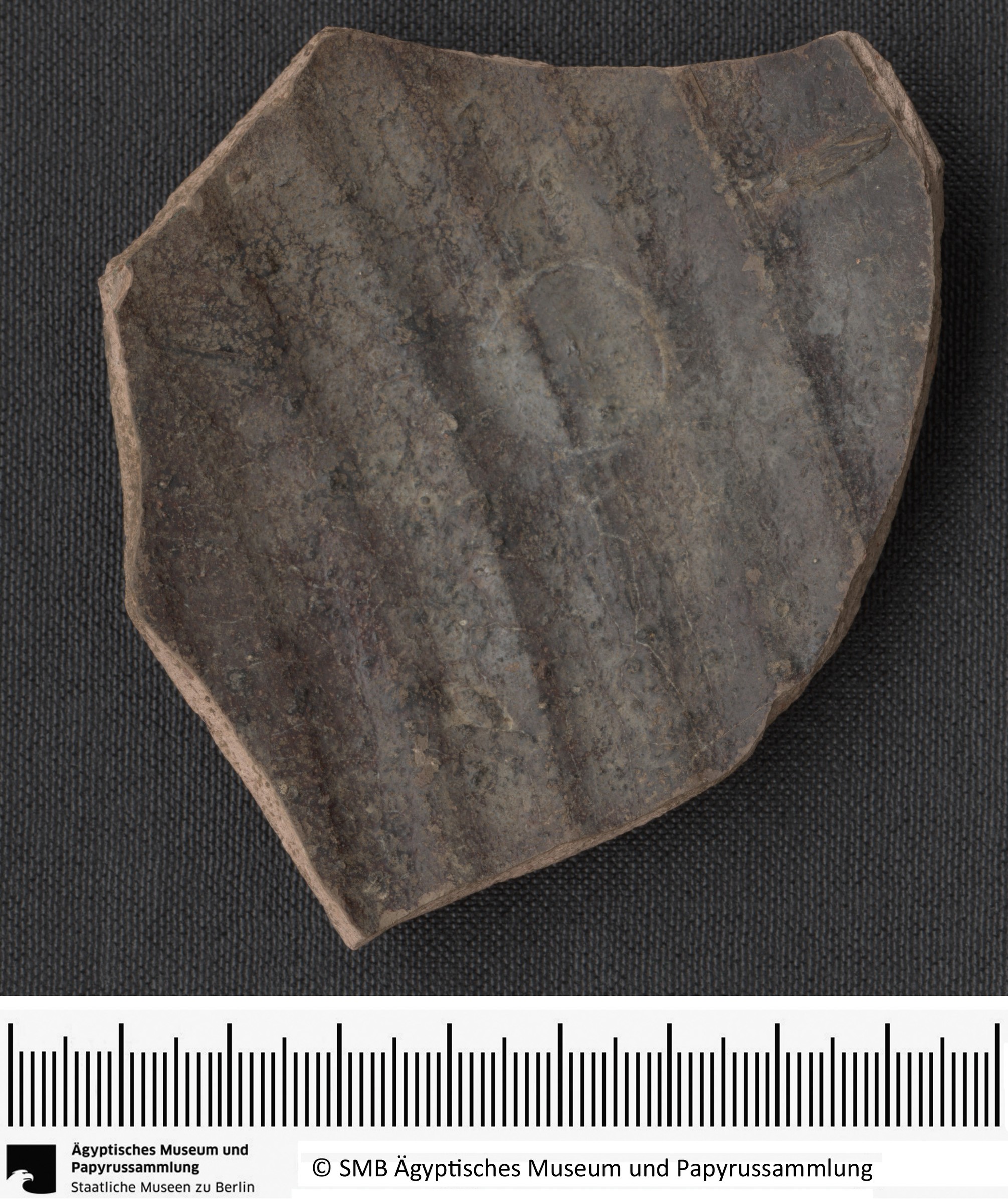Edition
|
1 | | Ḥr-pa-ꜣs.t For information on the writings of the amounts of money I am indebted to S. Lippert, Montpellier.sꜣ Hrı͗=w
Names with this form of writing are also being interpreted as Hrj-Ptḥ, cf. Lüddeckens, Demotisches Namenbuch (1979-2000), 746 – 748, 772.
ḥḏ dbn For a discussion on the reading of such signs I am indebted to BRIAN MUHS, Chicago. For Roman forms of ḥḏ cf. Wångstedt in OrSu 31-32 (1982-83), 25 Kat. XV. 10 |
2 | | H̱nm-ı͗w 7-ı͗rm-½ Transcription and translation according to S. Lippert (paper presented on the 13th ICDS in Leipzig 2017), this part must be in obols (not mentioned) and represents the equivalent to the amount of 1 silver drachma = ½ silver kite.|
3 | | Pꜣ-šr-Pꜣ-Swrs This name seems to be a combination of an Egyptian with a Greek one and is otherwise not known to me. For the Greek part cf. the currently only once attested name Swr ( Lüddeckens, Demotisches Namenbuch (1979-2000), 909.), which can be a transliteration of a Greek name Σούλις/ Σῦλις (The form Σουλιος seems to be a nominative. Cf. also the once attested female name Σουλωις: Clarysse / Thompson, P. Count (2006), 32,37, from Early Ptolemaic Arsinoites.). Once attested from the cemetery of Sohag is the female name Σενψούλις from the 4th Century CE (SB 10 10501,2) , which is given in Trismegistos as deriving from “Tꜣ-šr.t-n-..?..”. The – currently unattested – male equivalent to this female name should be Psenpsoulis/*Πσενπσούλις, cf. the Name Πσούλις with its several varying Greek writing forms. This will fit well the name attested on the ostracon here. Πσούλις is transferred by the Egyptian scribe in Pꜣ-Swrs, possibly in unawareness of the original nature of the name. According to this, we can reconstruct the female name from Sohag as being Tꜣ-šr.t(-n)-Pꜣ-Swrs.
(ḥḏ) qd ½ Curiously, the group for the currency kite is written behind the cipher. This can be found on some other Elephantine accounts and should be a local variant, possibly deriving from gs qd = “half of a kite”. It is remarkable that the same amount in l. 2 and 3 is written in a different way, but due to the information of S. LIPPERT from her material from Hut-Repit that there was a rule that sums lower than 5 stater were given in stater, but in contrast sums higher than 5 stater were written in deben+kite. ḥḏ dbn 2½ |
4 | | dmḏ (ḥḏ) qd 1 ḥḏ dbn 12 ½ It is unusual that the smaller amount kite is noted before the higher amount of the deben and not behind as usual. This can be found also on Ostr. Berlin P. 12954 (stater before deben), seems to be a local variant in Roman Elephantine.
1 For information on the writings of the amounts of money I am indebted to S. Lippert, Montpellier.
2 Names with this form of writing are also being interpreted as Hrj-Ptḥ, cf. Lüddeckens, Demotisches Namenbuch (1979-2000), 746 – 748, 772.
3 For a discussion on the reading of such signs I am indebted to BRIAN MUHS, Chicago. For Roman forms of ḥḏ cf. Wångstedt in OrSu 31-32 (1982-83), 25 Kat. XV.
4 Transcription and translation according to S. Lippert (paper presented on the 13th ICDS in Leipzig 2017), this part must be in obols (not mentioned) and represents the equivalent to the amount of 1 silver drachma = ½ silver kite.
5 This name seems to be a combination of an Egyptian with a Greek one and is otherwise not known to me. For the Greek part cf. the currently only once attested name Swr ( Lüddeckens, Demotisches Namenbuch (1979-2000), 909.), which can be a transliteration of a Greek name Σούλις/ Σῦλις (The form Σουλιος seems to be a nominative. Cf. also the once attested female name Σουλωις: Clarysse / Thompson, P. Count (2006), 32,37, from Early Ptolemaic Arsinoites.). Once attested from the cemetery of Sohag is the female name Σενψούλις from the 4th Century CE (SB 10 10501,2) , which is given in Trismegistos as deriving from “Tꜣ-šr.t-n-..?..”. The – currently unattested – male equivalent to this female name should be Psenpsoulis/*Πσενπσούλις, cf. the Name Πσούλις with its several varying Greek writing forms. This will fit well the name attested on the ostracon here. Πσούλις is transferred by the Egyptian scribe in Pꜣ-Swrs, possibly in unawareness of the original nature of the name. According to this, we can reconstruct the female name from Sohag as being Tꜣ-šr.t(-n)-Pꜣ-Swrs.
6 Curiously, the group for the currency kite is written behind the cipher. This can be found on some other Elephantine accounts and should be a local variant, possibly deriving from gs qd = “half of a kite”. It is remarkable that the same amount in l. 2 and 3 is written in a different way, but due to the information of S. LIPPERT from her material from Hut-Repit that there was a rule that sums lower than 5 stater were given in stater, but in contrast sums higher than 5 stater were written in deben+kite.
7 It is unusual that the smaller amount kite is noted before the higher amount of the deben and not behind as usual. This can be found also on Ostr. Berlin P. 12954 (stater before deben), seems to be a local variant in Roman Elephantine.
Translation
|
1 | | Harpaesis, son of Herieus: [_] 10 deben. |
2 | | Chenemeus: [_] 7½ (obols). |
3 | | Psenpsoulis [_] ½ (silver) kite and 2½ deben. |
4 | | Total: 1 silver kite and <1>2½ deben.
| |
![]() |
| P_12916_aussen |
|
| CC-BY-NC-SA |
|
![]() |
![]() |
| P_12916_innen |
|
| CC-BY-NC-SA |
|
![]() |
|

